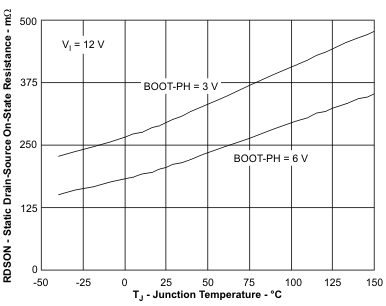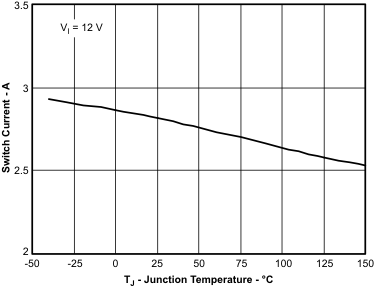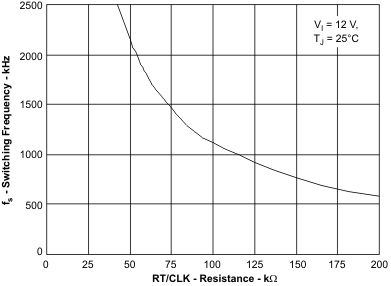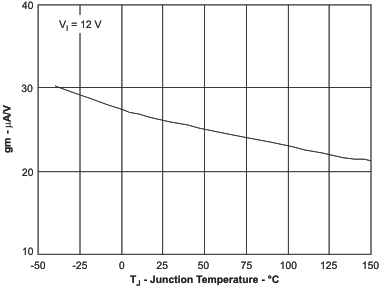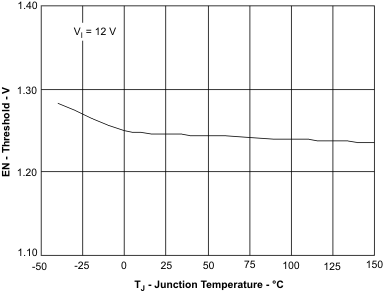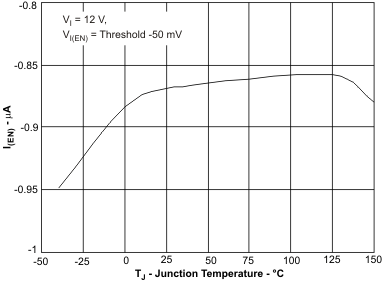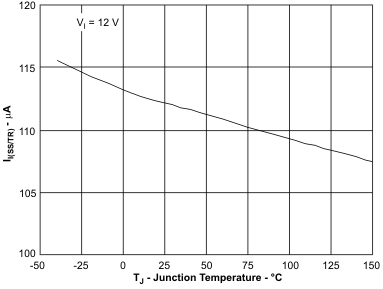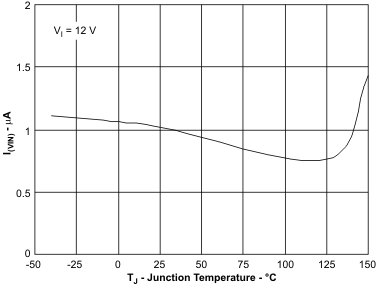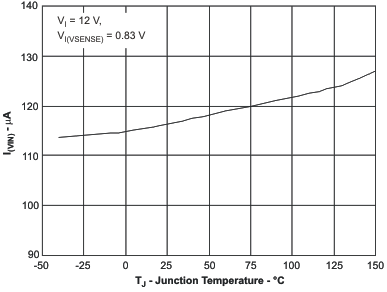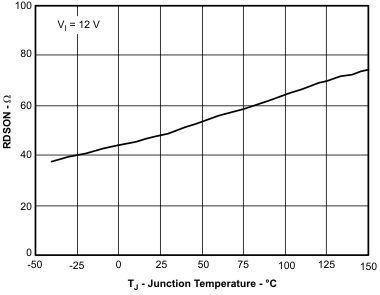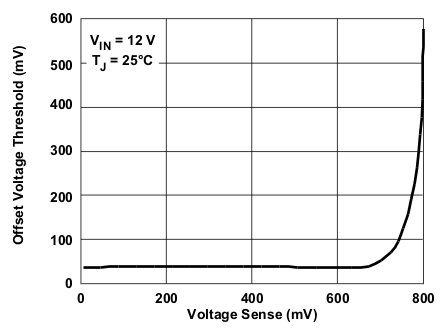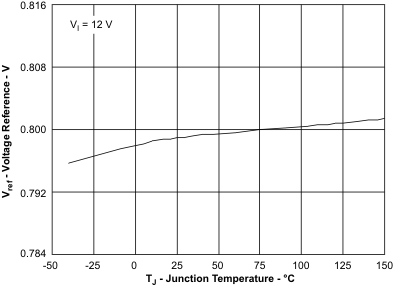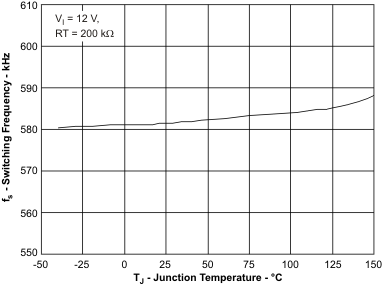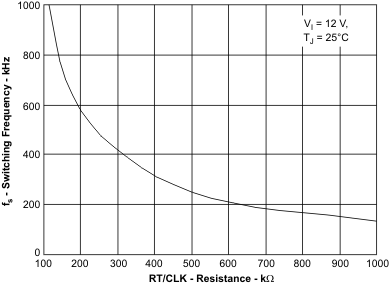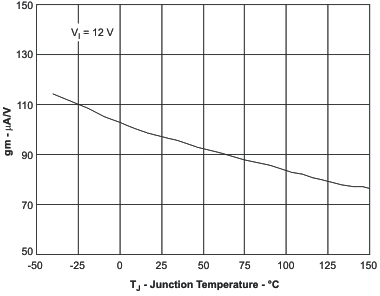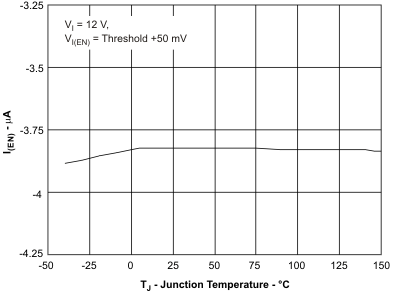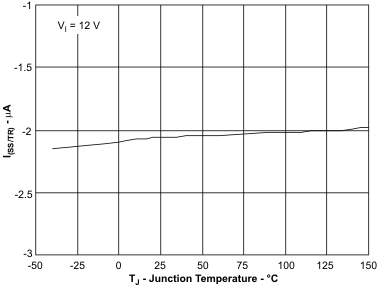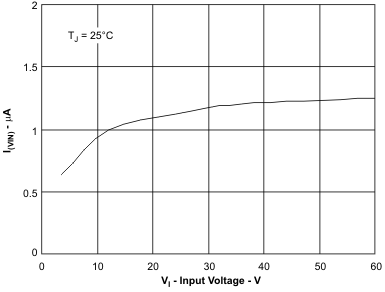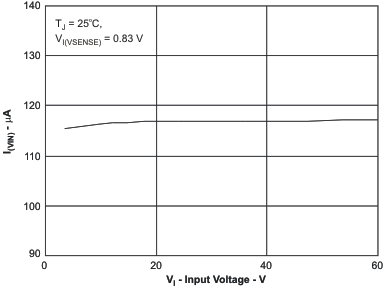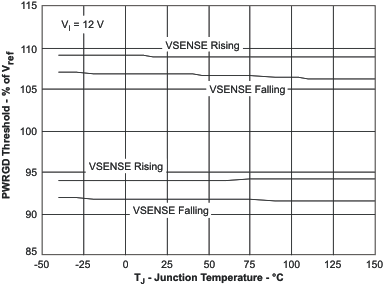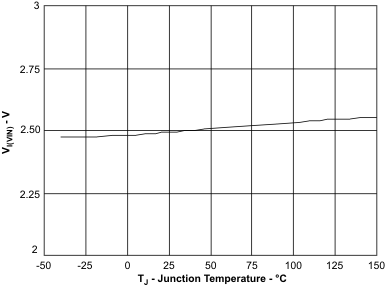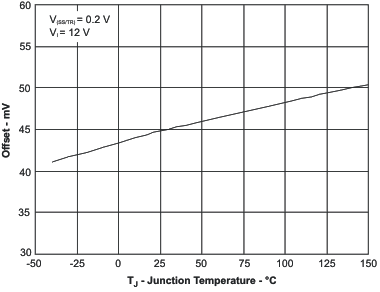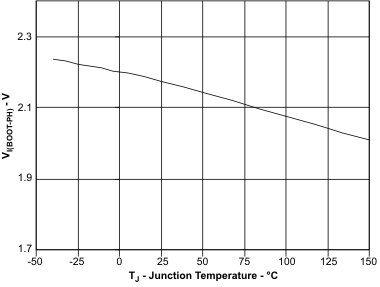SLVSAP1E December 2010 – March 2015 TPS57160-Q1
PRODUCTION DATA.
- 1 Features
- 2 Applications
- 3 Description
- 4 Revision History
- 5 Pin Configuration and Functions
- 6 Specifications
-
7 Detailed Description
- 7.1 Overview
- 7.2 Functional Block Diagram
- 7.3
Feature Description
- 7.3.1 Fixed Frequency PWM Control
- 7.3.2 Slope Compensation Output Current
- 7.3.3 Low Dropout Operation and Bootstrap Voltage (BOOT)
- 7.3.4 Error Amplifier
- 7.3.5 Voltage Reference
- 7.3.6 Adjusting the Output Voltage
- 7.3.7 Enable and Adjusting Undervoltage Lockout
- 7.3.8 Slow Start/Tracking Pin (SS/TR)
- 7.3.9 Overload Recovery Circuit
- 7.3.10 Constant Switching Frequency and Timing Resistor (RT/CLK Pin)
- 7.3.11 Overcurrent Protection and Frequency Shift
- 7.3.12 Selecting the Switching Frequency
- 7.3.13 How to Interface to RT/CLK Pin
- 7.3.14 Power-Good (PWRGD Pin)
- 7.3.15 Overvoltage Transient Protection
- 7.3.16 Thermal Shutdown
- 7.3.17 Small Signal Model for Loop Response
- 7.3.18 Simple Small Signal Model for Peak Current Mode Control
- 7.3.19 Small Signal Model for Frequency Compensation
- 7.4 Device Functional Modes
-
8 Application and Implementation
- 8.1 Application Information
- 8.2
Typical Application
- 8.2.1 Design Requirements
- 8.2.2
Detailed Design Procedur
- 8.2.2.1 Selecting the Switching Frequency
- 8.2.2.2 Output Inductor Selection (LO)
- 8.2.2.3 Output Capacitor
- 8.2.2.4 Catch Diode
- 8.2.2.5 Input Capacitor
- 8.2.2.6 Slow-Start Capacitor
- 8.2.2.7 Bootstrap Capacitor Selection
- 8.2.2.8 Undervoltage Lockout (UVLO) Set Point
- 8.2.2.9 Output Voltage and Feedback Resistors Selection
- 8.2.2.10 Compensation
- 8.2.2.11 Power Dissipation
- 8.2.3 Application Curves
- 9 Power Supply Recommendations
- 10Layout
- 11Device and Documentation Support
- 12Mechanical, Packaging, and Orderable Information
Package Options
Mechanical Data (Package|Pins)
Thermal pad, mechanical data (Package|Pins)
Orderable Information
6 Specifications
6.1 Absolute Maximum Ratings
over operating temperature range (unless otherwise noted)(1)| MIN | MAX | UNIT | |||
|---|---|---|---|---|---|
| Input voltage, VIN | VIN | –0.3 | 65 | V | |
| EN(2) | –0.3 | 5 | |||
| BOOT | 73 | ||||
| VSENSE | –0.3 | 3 | |||
| COMP | –0.3 | 3 | |||
| PWRGD | –0.3 | 6 | |||
| SS/TR | –0.3 | 3 | |||
| RT/CLK | –0.3 | 3.6 | |||
| Output voltage, VOUT | BOOT to PH | 8 | V | ||
| PH | –0.6 | 65 | |||
| 200 ns | –1 | 65 | |||
| 30 ns | –2 | 65 | |||
| Maximum dc voltage, TJ = –40°C | –0.85 | ||||
| Differential voltage, VDIFF | PAD to GND | ±200 | mV | ||
| Source current, ISOURCE | EN | 100 | μA | ||
| BOOT | 100 | mA | |||
| VSENSE | 10 | μA | |||
| PH | Current Limit | ||||
| RT/CLK | 100 | μA | |||
| Sink current, ISINK | VIN | Current Limit | |||
| COMP | 100 | μA | |||
| PWRGD | 10 | mA | |||
| SS/TR | 200 | μA | |||
| Operating junction temperature, TJ | –40 | 150 | °C | ||
| Storage temperature, Tstg | –65 | 150 | °C | ||
(1) Stresses beyond those listed under Absolute Maximum Ratings may cause permanent damage to the device. These are stress ratings only, and functional operation of the device at these or any other conditions beyond those indicated is not implied. Exposure beyond absolute maximum rated conditions for extended periods may affect device reliability.
(2) See the Enable and Adjusting Undervoltage Lockout section for details.
6.2 ESD Ratings
| VALUE | UNIT | ||||
|---|---|---|---|---|---|
| V(ESD) | Electrostatic discharge | Human-body model (HBM), per AEC Q100-002(1) | ±2000 | V | |
| Charged-device model (CDM), per AEC Q100-011 | All pins | ±500 | |||
| Corner pins (1, 5, 6, and 10) | ±750 | ||||
(1) AEC Q100-002 indicates that HBM stressing shall be in accordance with the ANSI/ESDA/JEDEC JS-001 specification.
6.3 Recommended Operating Conditions
over operating free-air temperature range (unless otherwise noted)| MIN | NOM | MAX | UNIT | ||
|---|---|---|---|---|---|
| TA | Operating ambient temperature | –40 | 125 | °C | |
6.4 Thermal Information
| THERMAL METRIC(1)(2) | DGQ (MSOP-PowerPAD) | DRC (VSON) | UNIT | |
|---|---|---|---|---|
| 10 PINS | 10 PINS | |||
| RθJA | Junction-to-ambient thermal resistance (standard board) | 67.4 | 45.2 | °C/W |
| RθJA | Junction-to-ambient thermal resistance (custom board)(3) | — | 61.5 | |
| RθJC(top) | Junction-to-case (top) thermal resistance | 46.7 | 52.1 | |
| RθJB | Junction-to-board thermal resistance | 38.4 | 20.6 | |
| ψJT | Junction-to-top characterization parameter | 1.9 | 0.9 | |
| ψJB | Junction-to-board characterization parameter | 38.1 | 20.8 | |
| RθJC(bot) | Junction-to-case (bottom) thermal resistance | 15.9 | 5.2 | |
(1) For more information about traditional and new thermal metrics, see the IC Package Thermal Metrics application report, SPRA953.
(2) Power rating at a specific ambient temperature TA should be determined with a junction temperature of 150°C. This is the point where distortion starts to substantially increase. See power dissipation estimate in application section of this data sheet for more information.
(3) Test boards conditions:
- 3 inches x 3 inches, 2 layers, thickness: 0.062 inch
- 2 oz. copper traces located on the top of the PCB
- 2 oz. copper ground plane, bottom layer
- 6 thermal vias (13mil) located under the device package
6.5 Electrical Characteristics
TJ = –40°C to 150°C, VIN = 3.5 V to 60 V (unless otherwise noted)6.6 Typical Characteristics
